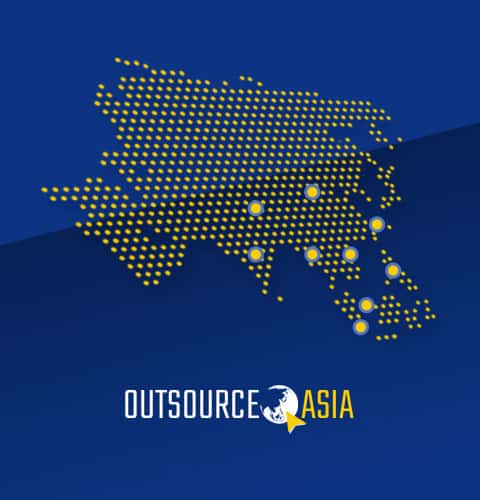
Reimagining Outsourcing in a Post Pandemic World
Outsourcing is one of the “flatteners” of the world, according to the book The World is Flat by Pulitzer prize winner Thomas Friedman. This portrays a dynamic, resilient, and flexible platform where organizations of all sizes and from any industry have equal opportunity in the global economic playing field. With at least 85% of logistic leaders willing to increase outsourcing budget and more than 90% of executives worldwide adopting cloud services and robotic process automation to gain better access to outsourcing strategies, the outsourcing market is expected to gain an astonishing $400 billion value by 2028.
While the destructive aftermath of the recent health crisis continues to expose the limitations of the traditional workplace environment and have highlighted the necessity of remote work for any business continuity plan, the outsourcing industry is thriving in the new normal – embracing disruptive technology to deliver continuously and seamlessly core competencies, innovation, intellectual property, and thought leadership from anywhere at any time zone and at any project scale. Corporate leaders must therefore reimagine how outsourcing can help their businesses to not only cope but flourish in a post pandemic world.
Let experts handle non-core business functions
In the current climate, simplifying is key. Amidst plenty of challenges but limited access to people and capital expenditure, turning to outsourcing will instantly shift the burden from fixed internal to variable internal. Accelerating outsourcing to reputable suppliers brings access to world-class skillsets and experience, latest technology and infrastructure with no up-front outlay, and improved service efficiency and quality.
Seek outsourcing partnerships that focus on value creation
The conversation that has to emerge from this tremendously altered business environment is one where ‘value’ and ‘transformation’ become increasingly important in any outsourcing relationship. Look for outsourced service providers that are willing to go out of their way to understand the organization’s key objectives and will do whatever it takes to provide value-based outcomes for the business.
Beware the cheapest supplier
The ideal outsourcing partner is one who has a robust approach to continuity and resilience, is conscious about minimizing regulatory risks and cybersecurity issues, able to load-balance work as demand shifts while. However, expecting this level of excellence and stability is impossible if you’re looking to pay for something that’s 20% or 30% cheaper than industry standard. You get what you pay for! Cost reduction shouldn’t be the top priority for considering outsourcing in the first place. Hiring remote teams based solely on how little they charge is not in the best interest of the organization.
Accelerate cloud adoption
Organizations that have migrated their business applications to the cloud will have a competitive edge to scale their technology resources to meet current demand as well as to accelerate digital transformation to drive revenue. Benefits include collaboration efficiency, data privacy and secure transmission, flexibility of work practices, and access to automatic updates, to name a few. Adopting cloud-based solutions brings new capabilities to market more quickly, scale more efficiently, and innovate more easily long beyond after the pandemic has subsided.
Rethink Business Continuity Plan (BCP)
In the unfortunate event of a global disruption, an organization’s survival and growth depends on having a business continuity plan that won’t delay or halt business operations and that would enable delivery of products/services at acceptable predefined levels. BCP strategies must align with the organization’s overall policies and objectives, must be people and location independent, and must be compatible with cloud-based infrastructure.
Cybersecurity vulnerability is a major concern
The government-mandated restrictions in response to the coronavirus crisis have given rise to work-from-home protocols which also leads to greater exposure to digital threats. With cybercriminals exploiting the vulnerability of stay-at-home employees and remote workforces, hacked and breached data from mobile, IoT devices, and online sources have skyrocketed. Organizations must improve its overall digital security behavior to protect the business from data loss, phishing, and other damaging cyberattacks. Data security measures are not limited to technological measures but should include employee awareness and training as well as maintenance of appropriate cybersecurity policies and procedures.
The nature of workplace relationships is evolving
Outsourcing has always been considered an ‘outsider’, not a strategic platform for experiencing operational resilience, revenue generation, or even healthy organizational culture. But the ongoing health crisis has proven that physical co-location of resources is not a hindrance for building strong, counsel-focused ties with outsourced workers. Business leaders looking to drive recovery and to experience growth in a post-pandemic world are those that are willing to attract, recruit, and retain the very best talent regardless of location and time zone.
What will set successful organizations apart?
While many organizations have experienced the negative impact on the economy and consumer market, others have navigated their way towards growth and success. This has highlighted key attributes of a well-run system in an increasingly complex business landscape:
- Cross-functional collaboration: The ability to connect functional, high-level leaders with essential business functions in a swift, organic manner can make efficient, informed, and effective decisions in response to the effects of any disruption.
- Resource sharing and talent agility: Prioritizing pooling of talents with a greater range of expertise and skills while providing options for upskilling, cross-training programs, and specialization with standardization for existing workforce.
- Dynamic partner ecosystem: Investing in stronger relationship with industry-leading organizations and business partners across the ecosystem to fuel flexibility and innovation.
- Seamless customer and employee experience: Taking advantage of proactive channels, mechanisms, and solutions to create seamless experiences between customers and employees that can withstand any kind of unforeseeable change
- Data availability and security: Real-time access to highly secure digital information that can help reach targeted business goals without being hampered by cybersecurity issues.
- Operational responsiveness: Defined business continuity plan and up-to-date disaster recovery strategies to consolidate and reinforce workforce responsiveness to any disruptive scenario.
- Digital integration and modernization: Replacing legacy systems, transitioning to cloud, and leveraging digital tools for standardization of processes and fast delivery of products/services.
WHAT’S NEXT FOR BUSINESS?
Outsource Asia is here to help your business – and you – capitalize on opportunities, mitigate risks, and prepare for recovery and growth in a post pandemic world. We bring extensive business advisory and outsourced resources tailored to each client’s unique needs while ensuring all critical functions are covered. Request for FREE CONSULTATION today.


